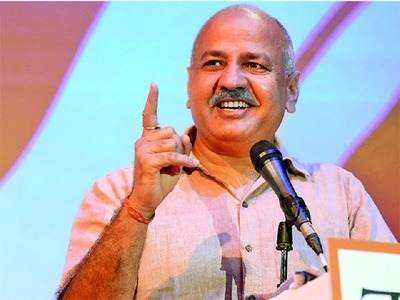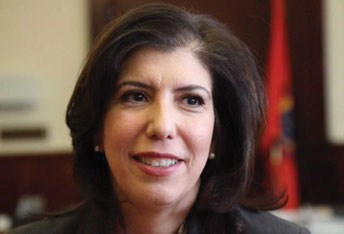
‘Our Government’s vision is to provide 100% coverage of high quality education and healthcare at very low, affordable cost”, added the Deputy Chief Minister of Delhi
BOSTON (TIP): The annual India Conference organized by Harvard Business School is a confluence of some of India’s brightest minds focusing on various issues concerning the country. This year’s conference last weekend again saw an impressive array of speakers from prominent politicians to movie stars and, journalists to economists. One of the keynote speeches was given by Manish Sisodia, Deputy Chief Minister and Education Minister of the city-state of Delhi, capital of India.
During his speech titled: “Healthcare and Education Model of Delhi”, he highlighted how his government has brought special focus to the Education Department which for last several decades saw stagnant budget allocations and declining standards of infrastructure in public schools run by the government. After his government came to power in 2015, the very first budget saw huge increase in education budget, rupee equivalent of a little over $1.5 Billion, which is 106% over the previous government’s allocation. Over the next two years, the allocation to education has been maintained at around a quarter of the total budget of the Delhi government, which has shown major improvements in both quality of school infrastructure and students’ performance. For instance, with the increased budget, 8000 new classrooms have been added to the government-run schools with 10,000 more are under construction, reduced the learning gap among children, invested in brining well-trained teachers, and taken efforts to make schools accountable to students and parents.
He then highlighted the issues that are plaguing the Indian health sector. Treatment in government hospitals is availed only when a person cannot access a privately-run facility. With a huge section of India’s population under poverty, quality healthcare and life-saving surgical procedures remain inaccessible to millions of people. He said it will be unfair to expect people to buy health insurance with a high premium. Hence his government’s model is a “health assurance” regime that guarantees quality and affordable healthcare government facilities.
Building a three-tier model to offer better care and reduce load on hospitals
India’s current hospital-centric model of healthcare delivery is neither sustainable nor convenient. Current Delhi Government focused both on reducing the load on existing hospitals by creating two additional tiers of care while simultaneously increasing the capacity of Delhi’s larger government hospitals.
The second tier, called ‘Polyclinics’, will serve as extended arms of government hospitals, to treat out-patients through Specialists. The third tier would be the low-cost primary health care facilities called ‘Mohalla Clinics’ or ‘neighborhood clinics’. Mohalla Clinic is an innovation in primary care that has been commended by the Stanford Social Innovation Review and by The Lancet journal among others.
“An average primary care unit costs close to one million dollars to build. Instead of continuing to build such expensive dispensaries, Delhi government decided to build temporary air-conditioned structures within the community that they are to serve at a cost of about thirty thousand dollars instead. We are now building 25 Mohalla clinics at the cost of one erstwhile dispensary. With more than 160 such clinics functioning throughout the city, the patients who were crowding the large hospitals for primary care have been diverted to local clinics” added Mr. Sisodia.
“Within three years of this model, we have been able to rebuild the lost confidence in public healthcare to a large extent. The number of patient visits have increased from 30 to 45 million, a phenomenal growth of 50%”, he claimed.
Finally, on why his model is a disruptive idea, Sisodia said: “Our government has provided ‘health assurance’ to all citizens, which is if the waiting time for any major surgery is more than a month, then the patient can get the procedure done at a private hospital and the government will pay for it. Economies of scale have ensured that the cost paid by the government is much lower than what the patient would have paid as an individual. At a fraction of the cost of surgeries at private hospitals, any patient who needs urgent procedures is entitled to free treatment at any of the empaneled private hospitals. This is as close to single-payer system that any state in India has attempted to introduce. “





Be the first to comment